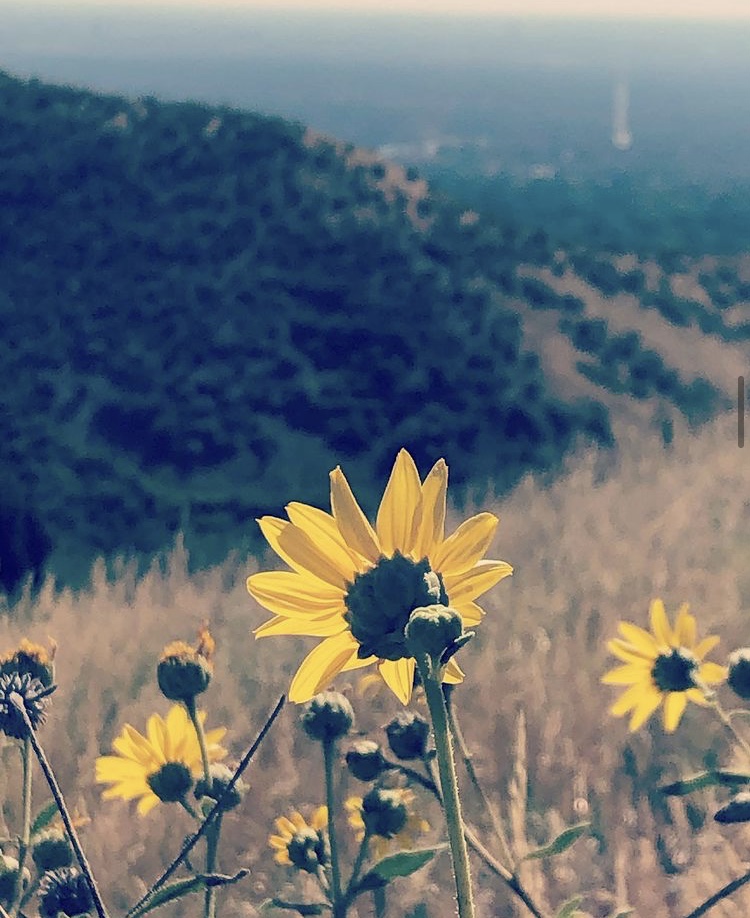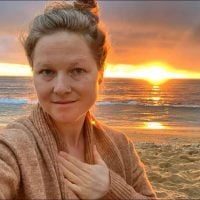View this post on Instagram
The following article is an excerpt from Anna Palmer’s book, Coming Home: Healing From an Eating Disorder by Finding Beauty in Imperfection. May the words here grant you deeper permission to come home to the fullness of yourself, humanness, divinity, and all. Welcome home.
~
Chapter 9. The Inner Child: How Our Fears and Feelings Guide Us Home
For most of my life, I felt like a child trapped inside of a wiser, more mature adult mind. People around me always remarked how “wise” I was and that I was an “old soul.” However, underneath my calm, cool exterior, the emotions I kept hidden never felt wise.
Trauma affects the emotional development of children and young adolescents. Trauma is a “too fast, too soon” experience that forces an individual to grow up too fast. When you experience trauma, it forces you to tuck away your innocence, to protect, to subdue your childlike qualities for the sake of dealing with a too-rapid, sudden, and forced maturation process. You don’t get the luxury of a gradual maturation process, but rather an unnatural nearly instantaneous and forced growth spurt. More often than not, it is one the child may have not been psychologically ready and equipped for.
Trauma changes you. You are no longer a child anymore, seeing things from a child’s lens. The overwhelmingly intense feelings that accompany trauma, such as grief, loss, pain, and fear take over and the innate connection to the child within gets severed off for survival purposes. The nervous system switches into fight-or-flight protection mode.
When someone is suffering from an eating disorder (ED), they undergo a quickening of their emotional development process. But an underlying immaturity remains in how to effectively cope with and regulate emotions without food or exercise behaviors. Those with an ED portray to the outside world their deemed “maturity,” but internally, they feel highly ill-equipped to navigate their emotional terrain. They learn how to “handle” their emotions by not dealing with them and instead the emotions get channeled into ED behaviors.
Trauma and the subsequent suppressed emotional response elicit the illusion that you are adept at “handling” tough experiences. You appear wiser. But, inside, your volatile emotional terrain feels ready to burst at any moment.
This emotional part of us is deeply connected to the Inner Child. We all have an Inner Child who is innately connected to joy, curiosity, wonder, play, and the present moment. The Inner Child represents the innocence within us.
We also have Inner Child parts within us that are scared, afraid, overwhelmed, and hurt. They are parts of the psyche that have undergone trauma, abandonment, betrayal, and pain. These parts are so valid and in need of being heard, seen, loved, and acknowledged for the pain and suffering they endured.
When we experience trauma, we often feel cut off from these parts of ourselves, and instead go into survive and protect mode. We have to. Because it feels like it’s the only way we can survive. As a result, we may bury our Inner Child and become serious and somber.
It’s not that we can’t access joy or are unable to feel joy, thereafter. But, from my experience, it does require an unearthing of our pain to get to these lighter parts of our Inner Child and being again on a regular basis.
After graduating from college, I became like an infant and toddler again. I had no idea what I was doing with my life, how to be an adult, or what that even meant. I plunged into an early 20s identity crisis, falling into a bottomless pit of depression, quaking with fear with every step I took, unsure of how to live as an adult with my underdeveloped “adulting” legs.
At the time, I thought I wanted to become a yoga instructor. I was convinced this was my destined healing path. Again, I believed this solution would “fix” me. I still believed myself to be “broken.”
Trauma and recovering from overwhelming life experiences or loss can make you feel so fragile, broken, and damaged. It leads you to believe that you are broken, because you begin to identify with your brokenness, rather than your wholeness.
Trauma causes us to identify with our wounds, rather than our own healing medicine. We identify with our weaknesses, rather than our strengths. We identify with our trauma, as opposed to the eternal truth of love as our undeniable and impenetrable identity.
At the ripe age of 21, I decided to live in a yoga ashram. I was supposed to stay for two months, while hoping I would last a full six months, maybe longer, assuming all went well. It was a work-study program where in exchange for working at the ashram (cleaning, cooking, yard work, etc.), I was allowed to live there, partake in daily meditation practices, temple services, yoga, and eat their delicious vegan/vegetarian meals. If I could make it six months at the ashram, it meant I could take my yoga teacher training there for free.
I remember the solo drive to the ashram, thinking, “Who am I to become enlightened?” I felt like a total fraud, just playing a part.
I was trying to dupe myself, yet again, into believing I had to “become” something in order to be okay. I believed if I put on an acceptable “mask” or identity I would feel better about myself. I was trying to cover up my brokenness (my humanness) with spirituality. In modern-day language, I was trying to “spiritually bypass” my trauma. I was still trying to avoid feeling the sh*t.
I was also still actively restricting my food intake, trying to maintain a certain weight, and was exercising religiously. I knew I would not be able to bring the bulimia with me to the ashram, nor did I want to. To compensate, I kicked my other ED behaviors into higher gear.
We were given one hour a day of free time at the ashram; I used mine to run miles around the forest-laden property. Running was my last-ditch ED effort to outrun my present experience. The ED was putting up a fight, trying to keep itself alive, against the new schedule of stillness and structure at the ashram.
Meditation forced me to be still and to sit with my internal discomfort. But I still was using exercise as a crutch and a buffer between feeling my intense fears, fears at this point of entering the “real” world.
We awoke at 5 a.m. every morning to go meditate in the temple before breakfast. Then, we were off to our morning duties, a midday lunch break, and then more chores in the afternoon after lunch. Whether it was cleaning, picking up around the property, or preparing food, we were expected to participate in seva (a Sanskrit word that means selfless service) for several hours each day. Near the end of the day, we had our one free hour to do as we pleased before dinner and evening meditation.
I thought this structure would provide me with a feeling of safety and containment and give me the skills to transcend my pain. The Ego, attached to its pain story, is very wise and cunning though. It will do anything it can to stay stuck in patterns of dysfunction simply because they feel safe.
You can only avoid it for so long, though, through substance or even spirituality, before you are right there in the thick of your pain, emotional upheaval, or whatever else you’ve been avoiding.
I felt like I was having an identity crisis. I was “playing” the part of an enlightened meditator yogi, while inside I felt like a part of me was dying. I still wasn’t ready or willing to allow the previous identities that perpetuated the ED to die.
I wasn’t ready to grieve my pain and my trauma. I thought I needed to get out of the ashram. I felt an intense need to run away from it all, to be home safely again, wrapped in the comforting arms of my old coping mechanisms.
Instead of stepping through the threshold of metaphorical death and initiation, I ended up choosing a much longer path of suffering. And, that was just how it was. I don’t judge myself for it anymore. In fact, I think there is always a reason for why we take a seemingly longer route. We need to find our own way. Along the way, there are things we need to learn, and sometimes that means taking a more circuitous “scenic” route.
So, with tears pouring down my cheeks, feeling like I was about to be broken open, I left the ashram after only two weeks and put a lid on what was starting to break open. I thought my emotions were telling me I needed to leave. Driving away, I felt as though I had gotten away with something, like I had escaped facing myself yet again.
~
Read part one of this series: Coming Home: On Healing from an Eating Disorder.
Read part two of this series: How Eating Disorders are a way of Coping with Emotions & the Effects of Traumatic Events.
Read part three of this series: Hello Bulimia, My Secret Friend: When Food Becomes Survival & the Body the Enemy.
Read part four of this series: The Real Toxin: The Harm of our Fat-Phobic Culture.
Read part five of this series: How Eating Disorders Feed on the Insecure Self.
Read part six of this series: What Sparked my Healing Journey from an Eating Disorder.
Read part seven of this series: The Dark Side of Religion: On Religious Trauma & Body Shame.
Read part eight of this series: When Lines Blur: Journey into the Heart of an Empath.
~












Read 0 comments and reply